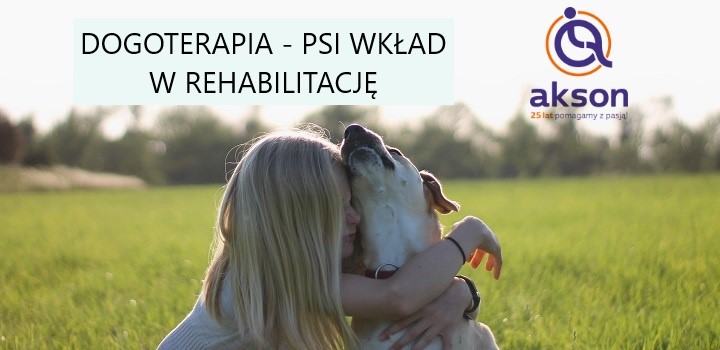Your cart is currently empty!

Dogotherapy as a natural therapeutic method
Therapy, as a series of medical activities , is aimed at restoring or helping the patient achieve optimal performance. Whether for children or adults, the most important thing is to get to and maintain the best possible physical and mental health. The methods and means, assisting in this peculiar struggle for quality of life, are as varied as the patients’ needs and capabilities.
Dogotherapy – a natural method
One form of assisting the development, rehabilitation and treatment of people with disabilities, with a particular focus on children, is dog therapy. This form of assisting rehabilitation and treatment through play and exercise with properly trained dogs is gaining popularity. The positive impact of the therapy dog in the physical zone, but also in the emotional zone, on children in wheelchairs, with cerebral palsy, autism, Down syndrome and in terms of broad socialization problems, is already a fact. In general, the method involves the meal of the planned presence of dogs in the process of revalidation of people with disabilities. Observations by practitioners show that the use of dog therapy brings great benefits to the rehabilitation process and improves the functioning of those who participate in it.
Dogotherapy not only contemporary
Animals have served as therapists since time immemorial. Ancient images of dogs licking wounds and guide dogs are unmistakable messages. In ancient Greece, they even played the role of healers in the cult of Aesculapius. In 1792, a psychiatric hospital in Britain incorporated small animals into the treatment process so that hospitalized patients could be cared for, and since 1867, in a hospital in Germany, epilepsy patients have had constant contact with animals. However, the more professional use of dogs in human treatment dates back to the first half of the 20th century, when scientists began to take an interest in the positive aspects of the animal’s effects on humans. Sigmund Freud and Carl Jung, among others, had a hand in this. Subsequent trials showed unequivocally that contact between sick people and animals has a significant impact on improving their health, both physical and mental. In Poland, these therapeutic methods have a much shorter history, being the result of the emergence of organizations dealing with therapy involving a dog in recent decades.
Dogotherapy – how NOT to do it
Lying on the dog, touching the dog’s paws, inappropriately stroking the dog, pinning clips to the dog’s coat, are activities that are unpleasant for a standard dog. On the other hand, performing hygiene tasks should be reserved only for the adult owner of the dog. It is therefore unacceptable to use the above examples as elements of classes. Emboldened by the therapist, the child may try to use the new skills with other dogs. Such a situation is a potential danger, because all the activities mentioned above are not natural and pleasant for the dog, so also the reaction of the four-legged dog may not be very friendly. The purpose of dog therapy classes, contrary to popular belief, is not to cuddle, stroke and care for the dog. At the center of well-run classes should be the child, his or her strengths, weaknesses and needs, but with respect for the animal’s welfare. Scientific studies conducted in many countries clearly indicate that any kind of hugging or touching of the animal’s limbs, such as in the gesture of shaking hands, have a negative impact on the dog’s well-being and health in the long run. These are not pleasant behaviors for the canis familiaris species, though of course patiently endured by many dogs. To this should be added that such therapeutic treatment also does not bring the desired results for the young patient.
Dogotherapy – what it should look like

Initially, it was thought that the main benefit of therapy involving a dog, was simply the physical contact with the animal and the establishment of a psychological bond with the dog, which in itself was expected to have a positive effect on treatment and facilitate overcoming the disease.
Nowadays, it is known that the dog during classes should play a motivating role, encourage the performance of various activities. The presence of the dog is intended to provide an impetus for the participant to take action. Dogotherapy also enriches methods of working with a child with communication disorders. Whether a child is lying down, in a wheelchair or secured in an upright, he or she can, and should, become a beneficiary of such activities. Even methods of related sciences, such as speech therapy, when breathing, speech organ improvement, articulation or auditory exercises must be performed, change their character if a dog is also involved. They then become attractive, bring joy and motivate the child to work, dynamizing the therapeutic process. In addition, contact therapy with a dog, allows to form orientation in the scheme of one’s own body, learn about the structure of both the animal and the human, improve motor skills through exercises performed by the child in interaction with the dog, as well as stimulate the sense of sight, hearing and touch, and exercise attention.
Importantly, the mere presence of a dog in a child’s environment will not produce therapeutic effects. A huge role is played by the dog therapist leading the meeting. It is a suitably qualified specialist, who also has knowledge of working with dogs, that is the guarantee of well-conducted dog therapy classes. Conducted by such a person, the dog classes will certainly be tailored to the individual abilities and needs of the patients taking part.
Dog therapy specialist
The possibilities of dog therapy are versatile and almost limitless. Everything depends on the imagination and creativity of the instructor, who, knowing the specifics of working with a dog, should be aware of the possibilities, but also some limitations of the form of therapy support used. Any therapy should be an individualized process, and a professional dog therapist can use the presence of a four-legged dog in many ways. His role is also to implement the child’s behavior in such a way as to ensure safe contact with dogs, including those encountered in everyday situations. Systematic participation in properly structured activities with a dog offers the possibility of improving the physical and mental condition of children who benefit from this form of therapy. Skillfully conducted physical activities with the participation of a dog are those from which, despite the sometimes small involvement of the animal in them, the child leaves with a sense of successful play with the pet. An ingenious dog therapist can create extraordinary activities with a dog with his work, even if the dog lies idly by. All activities must be subject to the needs and abilities of the child. Activities with an animal create a different reality, allowing one to forget, for example, unpleasant rehabilitation procedures or one’s disability. The most important thing in this type of meeting is the skillful selection of the audience, because not every child with intellectual disabilities will benefit and feel joy from contact with a dog. Accordingly, visiting dog handlers should be required to have thorough pedagogical and dog therapy training. A person with the right directional training will be able to properly identify the needs of meeting audiences and adapt the forms and methods of work to them.
Benefits of dog therapy

Dogotherapy helps in the physical development of the participant, shaping and developing the ability to show emotions and feelings. But this form of therapy also teaches self-reliance, creating opportunities for the child to derive responsibility for actions taken toward the dog. Well-conducted therapy makes him more eager to take on the tasks set before him, happily perform them and be mobilized to complete them, so that the therapist achieves the desired effect – activation of a specific sphere. Moreover, for most children, contact with a dog is a source of pleasure.
The dog perfectly fulfills the role of a friend, as it does not judge the child, does not laugh at his disability, accepts it unconditionally, does not criticize it, does not look with surprise at the wheelchair on which the participant sits. In the company of a dog, a child feels important and loved. Dogotherapy promotes general physical activity and motor skills. Children participating in the classes usually have problems with motor activity, and are often reluctant to move. Some of them are forced to use only a wheelchair. The dog motivates them to move. It makes them head toward the animal to say hello. They focus their attention on the dog.
Dogotherapy improves the precision of movements, giving the child more control over them. It is also an excellent form of rehabilitation for the child. This is because the presence of a dog helps with self-care activities and reduces emotional tension. For a disabled child, unfortunately, the dog is also often the only friend. This is why dog therapy is perfect for rehabilitating chronically ill children. It is used in hospitals and hospices.
It breaks the routine of daily examinations and unpleasant procedures for the young patient. It represents an element worth waiting for and gives more meaning to the hospital reality.
Dogotherapy – Great therapy, but not universal
Of course, it should be emphasized that not everyone will respond positively to this form of assisted therapy. In some cases, the use of this method may be detrimental to the patient. One should not be fooled into believing that dog therapy is a universal form, advisable for every person. Not all patients will be persuaded to cooperate with the dog; emotions, including fear, can effectively negate the therapists’ efforts. Another obvious argument against dog therapy is an allergy to the animal’s dander, saliva or epidermis.
As long as you don’t “overdo it”….
Many parents, wishing to intensify the beneficial effects of dog therapy on their child, choose to purchase a four-legged dog for their home. However, it is important to realize that a pet dog will not perform a function identical to that of an animal taking part in the activity. The dog, during therapeutic meetings, is meant to motivate action. An animal that stays at home with a child every day can quickly lose its appeal, and therefore not provide the stimulus for rehabilitation tasks. In addition, as already noted, the determining factor in the therapeutic process is the instructor, not the animal. Serious consideration should also be given to whether a family taking care of a child with a disability on a daily basis is up to the task of being a responsible dog owner.
Let’s look for a professional dog therapist
Dogotherapy as a method of assisting the development of a child with disabilities, carried out responsibly, brings tangible benefits. Each case should be treated individually – the overriding value should be the welfare of the child. Only the legitimate and professional application of dog therapy will bring the intended results.


